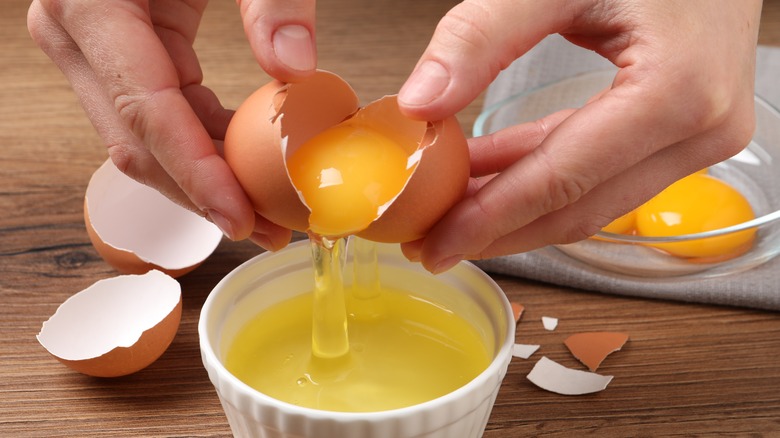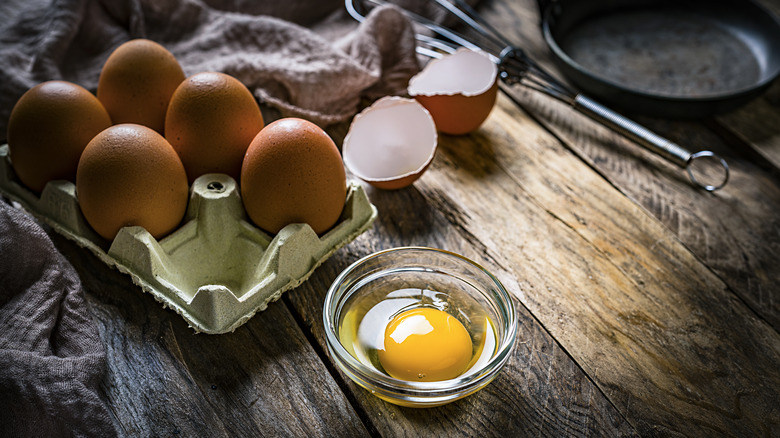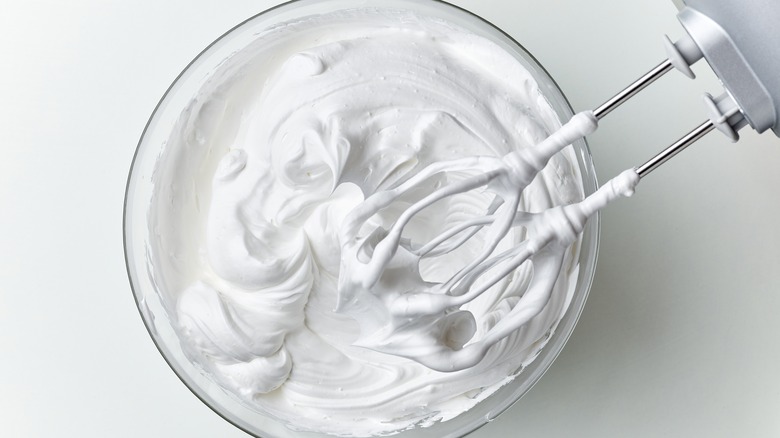The Benefits Of Separating Eggs Cold Vs. Room Temperature
Plenty of baking recipes call for separating eggs into their two interior components — yolks and whites — but few specify whether this should be done before or after the eggs are brought to room temperature. Perhaps you need a few yolks for a lemon curd or vanilla custard, or a half dozen egg whites for a pavlova or meringue; whatever the case, it's crucial that you avoid mixing the two together in the process of separating the yolks and whites, which means that you need to keep the yolk intact.
Many factors, such as the freshness of the egg or the health of the chicken that laid it, contribute to the fragility of the yolk, but the easiest factor to control is the temperature of your eggs. While the yolk of a cold egg will be less likely to break, it is more difficult to separate it from the egg white; for this reason, it is easiest to work with eggs that are already at room temperature.
Techniques for separating egg whites and yolks
Once your eggs are at room temperature — which is ideally around 68 to 70 degrees Fahrenheit -– you'll need to decide how to proceed. There are countless ways to separate egg whites and yolks, which can be summed up into three main methods: shells, hands, or tools.
In the first method, the eggs provide their own equipment for splitting apart the whites and yolks. You can crack the egg into a bowl, then scoop out the yolk using half of a shell. Similarly, you can crack the egg over a bowl and allow the white to drop out while keeping the yolk cupped in the shell as you pass the yolk back and forth. This method easily divides the yolk from the white but runs the risk of piercing the yolk on a sharp piece of shell.
Specific kitchen tools have been invented for this procedure and plenty of kitchen hacks exist, such as employing a wire rack typically used for cooling cookies. The simplest and safest method, however, is to use only your own hands. Once the egg has been cracked and released into a bowl, discard the shell and scoop the yolk out gently with your fingers. Or, after cracking the egg, pour the insides through your fingers, allowing the whites to gently slip down while you cradle the yolk.
Temperature matters for food safety and baking
Your eggs can be safely kept at room temperature for about two hours while intact — or longer if you opt for farmers market eggs — but soon after you have separated the egg yolks and whites, you'll want to carefully store them in the fridge to avoid the health risks of salmonella. If you are baking with just one or the other, place the yolks or whites that you are not using immediately into an airtight container. Avoid placing your eggs in the refrigerator door (the warmest part of the fridge). Instead, put them toward the back of the refrigerator where they can be stored for up to four days.
As for baking with room-temperature eggs, there are benefits beyond just the ease of separating the yolks and whites. When it comes to cakes and other baked goods with a light, fluffy texture, you want to make sure that you can incorporate plenty of air into the batter while mixing the eggs with ingredients like butter and sugar. Egg yolks and whites that are at room temperature are better able to expand with captured bubbles when whisked.



